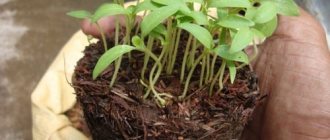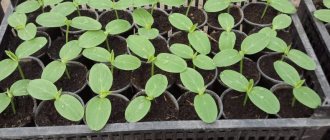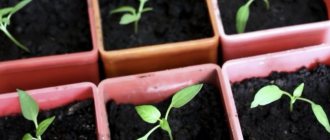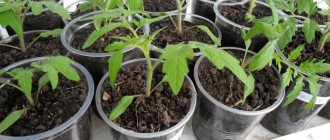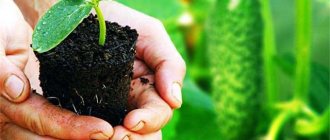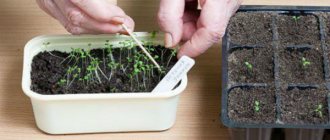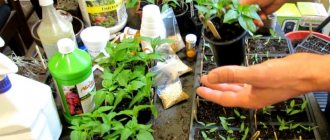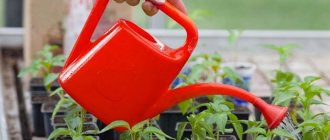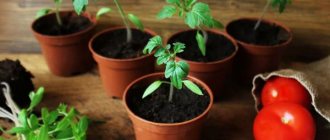What is picking
Initially, pepper seeds are planted in a common box. All together the seedlings feel comfortable in one box. But only for the time being.
As the future peppers grow, they become crowded and their roots become intertwined. In order for the seedlings to continue to develop and grow properly, it is necessary to pick.
Picking is the planting of plants that grow in one container into a separate “dwelling”.
Another reason why pepper requires picking is to train the seedlings to move. Plants learn to feel comfortable when moving from one environment to another. In this way, the seedlings are hardened and will calmly tolerate being moved to the garden bed in the future.
During the dive process, the old soil is completely replaced by new soil. This procedure is a kind of prevention of the development of fungal diseases.
Not all gardeners are proponents of diving, since all manipulations with the roots of the plant can provoke stress in the crop. As a result, peppers can get sick and even die. But it will not be possible to avoid picking if you sow plants in the same container. To avoid this procedure, you must initially plant each seed in a separate cup or container.
Diving seedlings into diapers
A very convenient, fast and, most importantly, safe way for seedlings to pick is to wrap them in diapers. For the procedure, it is necessary to prepare a deep, wide container where the peppers will be placed after diving. These can be cut-off containers, plastic containers for fruits, cakes or deep trays. They are very suitable for this event.
For diapers, you can use a small piece of polyethylene. It is also convenient to wrap the peppers in plastic lunch bags, or you can cut any thick bag.
- Prepare the soil mixture in a bucket or bowl.
- Polyethylene measuring 20x30 cm is spread on the table, with the narrow side facing you. Place 2 tbsp in the lower left corner. ground, retreating from the edge 5 cm.
- Using a spatula or spoon, separate the seedling from the common container and place it on the ground. Next, the roots of the seedling are sprinkled with 1 tbsp. l. soil mixtures.
Here you need to be careful: the cotyledon leaves of the pepper should extend about 1 cm beyond the film.
- After turning the film 1 turn, fold the bottom and roll the roll to the end. If there are concerns that water stagnation may occur during irrigation, the bottom of the roll, where there are no pepper roots, can be pierced in several places with scissors or an awl.
- The finished diapers are secured with an elastic band so that they do not unfurl spontaneously, and placed in common containers with high walls. Alternatively, you can use a trimmed five-liter bottle or a polypropylene cake box.
- If, as the seedlings grow, it turns out that there is not enough soil in the diaper, then the cellophane can be easily unrolled and the required amount can be added.
The second method of picking in diapers involves abandoning the folding of the bottom of the film. That is, cellophane with soil and a pepper seedling is simply rolled up. The bottom remains open, there will definitely be no stagnation of water. These rolls are installed in containers, at the bottom of which it is advisable to pour sawdust.
When diving into the diapers, the roots of the pepper remain straightened, are freely located downwards, and are less injured.
How to properly put pepper in diapers: video
Features of caring for seedlings in diapers
Immediately after picking, the diapers are well rinsed with water. The container with seedlings should not be exposed to sunlight for several days until rooting takes place.
It is better to curtain the window with gauze: it will provide protection from scorching rays and provide the seedlings with a sufficient amount of diffused light. You can extend the required daylight hours with the help of phytolamps.
You need to water the seedlings moderately: it is better to underwater than to overwater.
The diapers retain moisture in the soil well, and this will be quite enough for the seedlings. When overwatered, peppers will begin to stretch out, and various diseases may also appear. It is also possible to moisten the sawdust in a container, and the pepper itself will find the necessary moisture.
Pros and cons of the procedure
Although the picking process has a number of advantages, it also has disadvantages that cannot be discounted.
Advantages:
- Preventing the spread of diseases. If one of the seedlings gets sick, the rest will not become infected from it through the soil.
- The aerial parts and root system of the peaked crop develop normally.
- During picking, you can easily sort the plants, simultaneously removing frail and weakened specimens. In the future, they will not be able to produce a full harvest.
- Seedlings are comfortable in a separate container; they do not feel the need to compete for space in the sun, nutrients and water.
- The culture that has survived the picking grows strong, strong and resilient.
Flaws:
- Picking is a labor-intensive process on which the gardener will spend a lot of time.
- The procedure requires mandatory adherence to deadlines.
- If weak specimens were selected during the dive, they will take root poorly or not at all.
- There is a high risk of damaging the roots of the plant and causing its death.
How to care for peppers after picking
Pepper seedlings experience stress not only during picking, but also after it. In order for a culture to adapt well to a new place, it needs to be provided with proper care.
Temperature
It is best if the peppers grow at an air temperature of 17-18 C°. These indicators are the same both for the picking process itself and after it. If the temperature is higher than the required values, you need to regularly ventilate the room. If the thermometer drops below normal, turn on the heating appliances.
On a note. If the air temperature drops below 14 C°, the growth of peppers slows down. If the indicators are high, the culture will stretch upward.
Air humidity
Should be 65-70%. To monitor this indicator you need to use a hygrometer. If humidity is low, peppers may wilt. And if the air is too humidified, the risk of developing fungal diseases increases.
Watering
Plantings need to be moistened regularly as the soil dries out. Watering is carried out twice a week, when the air temperature reaches the required levels. Water should not stagnate. For pepper, both a lack of moisture and its excess are dangerous.
Top dressing
Seedlings should not be fertilized more often than once every 10-14 days. Final fertilizing should be done 10 days before the seedlings are planted in the garden. Before the fertilizer is planted, the soil needs to be watered a little.
Complex fertilizers must be used strictly according to the instructions. They contain all the mineral elements necessary for plants in the correct ratio.
Lighting
The health and growth of seedlings largely depends on the correct light regime. Peppers need light, at least 10 hours a day, ideally 14 hours. The lack of light can be compensated by using a phytolamp. There should be an interval of at least 10 cm between the plant and the lamp. The light should fall on the seedlings from above.
Hardening
It is produced 7-14 days before transplanting seedlings into open ground. This way the seedlings adapt more easily and quickly to new conditions. The plant should be gradually exposed to the street, gradually increasing the time it stays outside. Starting from 15 minutes a day, the walking time is gradually extended throughout the day.
The day before transplanting to a new location, the seedlings can be left outside overnight.
Disease prevention and pest control
Seedlings should receive regular, proper care. You need to check them daily for pests and disease symptoms. Experienced gardeners recommend treating them with Epin after picking, strictly observing the dosage.
Preparatory work
Before diving, you should prepare all the necessary materials and tools.
First of all, containers for seedlings are selected. They can be made of different materials. Even differ in size and shape: cardboard bags, plastic glasses, old mugs, special containers from the store.
Regardless of the chosen container, it must meet 2 criteria:
- For normal root development, the volume of the dish is selected in the range of 200-250 ml and its height should be from 10 cm.
- Since peppers need frequent watering, containers should be waterproof. In addition, have the necessary element - a drainage hole.
Dishes intended for work are thoroughly washed. To prevent stagnation of water, holes are made at the bottom. Next, the container is filled with soil.
Vegetable growers are often interested in the question of soil composition. The best choice is a soil mixture with field or turf soil, humus or peat. Sand should also be present as a loosening material.
Additionally, the soil is enriched with organic substances. Mineral fertilizers are also used: potassium chloride, ammonium nitrate, superphosphate.
Video on how to properly pick pepper seedlings
This video talks about the intricacies of picking pepper seedlings. What mistakes do novice gardeners most often make and how to avoid them. Join the viewing!
Picking peppers is a procedure that helps to cull weak specimens of plants and leave only those that will give a full harvest. Transplanting peppers into separate containers not only prepares the plant for transplanting into open ground, but also allows the formation of a strong root system and aerial parts. When performing the picking procedure, it is important for the gardener to adhere to certain rules and deadlines.
